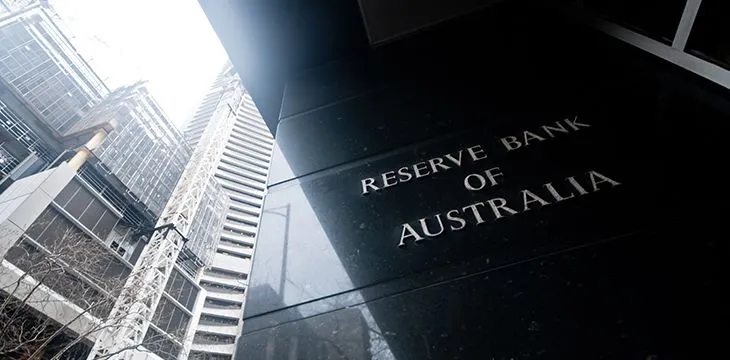|
Getting your Trinity Audio player ready...
|
Bitcoin Core (BTC) was a talking point at Parliament House over the past week between the Reserve Bank of Australia (RBA) and Parliament representatives when the discussion of non-bank payment methods arose.
The head of RBA Payments Policy, Anthony Richards, was asked about whether he considered cryptocurrencies such as BTC as a viable alternative to the current banking system. Richards admitted he had first-hand experience as a user of BTC over the past five years by owning smalls amounts for experimental purposes, but said his experience has not left any optimism on the chances of BTC being adopted in the real world:
It hasn’t become a mainstream payment option. It doesn’t meet many of the criteria that we would normally attach to money, [as] a stable store of value, it hasn’t proved to be that. Unit of account, people don’t post their prices in Bitcoin even [at] Bitcoin conferences. As a means of payment, it is possible for person to person transactions, but it is not something that people are using in day to day transactions.
His assessment on the current state of BTC is remarkably accurate.
The use of BTC in payments and the numbers in merchant adoption has seen stagnation since 2017 due to congestion of the network, as a response to the block size capacity becoming full that has led to high and fluctuating transaction fees.
Users flocked away from BTC seeking alternative cryptocurrencies which took away the momentum established from the network effect. The users that decided to stay on the BTC network adopted the philosophy that it is best used as a “store of value.” But it has also failed to be that, losing as much as 80% of the value from it’s all time high, as any store of value would also need to be able to be predictably used as a Medium of Exchange in the future to be deemed valuable outside of speculation.
Richards added that the RBA’s attention has now widened onto other potential disruptive forms of money, “It is something that we continue to study, and as you are aware there a proposal for other stable coins [like] Facebook, but it remains to be seen if and when that will ever launch.”
The mention of Facebook’s proposal of Libra as a digital currency was interesting, considering the extreme unlikelihood of such a concept ever getting off the ground due to the regulatory overheads and hurdles they would face as they would qualify as a money transmitter, subject to same scrutiny faced by banks. At the same time, as they are not reinventing the wheel with their use of blockchain technology, they risk patent infringements from a company like nChain who have an ever growing blockchain patent portfolio.
This brings light to a fundamental oversight that appears to still be misunderstood by the RBA: that Bitcoin was never intended to make central banks obsolete. Since Bitcoin (BSV) has continued to scale on-chain with large blocks maintaining its core original design, it has the technical capabilities within the protocol to provide tokenization of real-world assets digitally on-chain in a transparent and auditable manner that legally complies within the law.
It may be in the central banks’ (such as the RBA) best interests to choose to adapt to the times or risk falling behind, as the tokenization of fiat currency as a digital asset will allow them to leverage off the security advantages that the Bitcoin (BSV) system provides through the mining infrastructure and the economic incentive model, while also solving the complex issues of scalability, auditability, costs and provide efficiency towards improving the existing overheads involved with managing the issuance of fiat currency.
The tokenized fiat-based currency would act as a stablecoin on top of Bitcoin (BSV) and consumers can continue to use their fiat-based currency at the point of sale without even realizing that they are using Bitcoin (BSV). The underlying value of Bitcoin (BSV) will continue to increase as it would act as the commodity ledger that is being used to transmit and store all of this data.
The stagnation of the BTC protocol by the Bitcoin Core developers shows that they had a very limited understanding of the true potential of the Bitcoin at full scale. It was intended to be a global and inclusive commodity ledger for all that includes governments, central banks, enterprises as well as everyday users.

 07-03-2025
07-03-2025 





